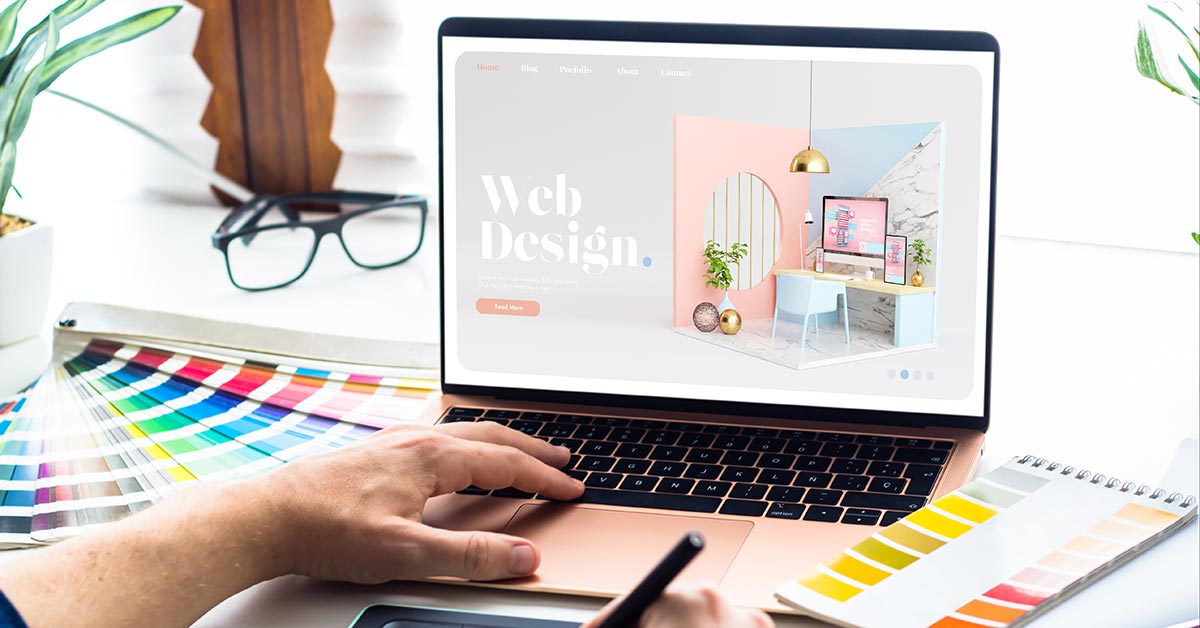AI has been making its way through business in almost every sector you can imagine, but how it shapes the future of our websites could be one of the most impactful. From automation to personalized experiences for every user, the way we surf the web is going to change dramatically.
Explore the incoming AI landscape and learn about the different ways you can incorporate these new tools into your online platforms.
Personalized UX
AI and its power to process data in real time helps web designers curate custom experiences for any user that visits a site. This can be anything from content recommendations on the site itself to backend layout changes or even product suggestions for e-commerce sites based on user’s clicks.
Additionally, AI chatbots can also be used to answer complicated questions about the website, purchases, or really anything you can think of, making navigation seamless and more efficient for users. Some even employ voice search and response, which can be helpful for users with disabilities or impairments, improving accessibility as a whole.
Custom Visual Layouts and Content
AI not only has the ability to suggest appealing layouts for your website but can also help make custom images and graphic designs for sites. It can incorporate popular design trends as well as be trained in your business brand presence to curate custom content. This can help designers save time on making several iterations of the same graphics and pick the best-performing ones to continue to promote, leaving space for designers to focus on more complex tasks.
Accessibility-First Design
In addition to the chatbots and other website assistants that can guide users, AI can also analyze different aspects of the site to make it as compatible as possible for those with disabilities and impairments. Some examples can include simple tasks like creating or altering alt-text to help users navigate through the site easily. Some bots can also identify certain products in images and present items that might pair well together or are frequently bought together.
Predictive Analysis for Personalization
In addition to the “frequently bought together” suggestion that machine learning can introduce, it can forecast other user behaviors based on their past interactions. This is especially useful for offering personalized discounts, content, or suggestions that are likely to engage users.
One example of this can be seen in heat-mapping tools, where AI will use behaviors and engagement metrics to predict and analyze the different areas of their sites that see the most viewership or interactions. This can not only help owners of the site better understand their customers but also increase retention rates.
SEO Benefits
Most know Chat-GPT for its ability to create swathes of solutions to practically any written question you can ask it. It can be useful in SEO and blog spaces to quickly and efficiently make content that represents your brand and resonates with your audience. However, you can also train it (or have it train itself) on common SEO practices and develop future strategies for future content, such as keyword research, meta-description updates, and other SEO-related approaches.
Automate A/B Testing
As we mentioned above, AI can be utilized to pick the best graphics and images that will work best for your images, graphics, products, etc., but it can also help curate your ad sets as well. Using real-time data analysis can speed up your optimization process and allow designers to implement and choose winners to improve user experience quickly.
User First Web Design
Responsive web design and user retention are some of the main drivers that keep websites at the top of search engine result pages (SERPS). Interactive elements, intuitive navigation, and mobile-first strategies are some things that AI might be responsible for going forward. The design of your website should always consider your user experience and enhance their stay. This is especially important for eCommerce websites, where it could potentially directly affect sales and brand loyalty.
The digital transformation led by AI is revolutionizing web design, offering tailored user experiences, enhanced accessibility, and optimized SEO strategies. As AI’s capabilities expand, it’s not just about automation but creating intuitive, user-centric online spaces. For businesses and designers, embracing AI is crucial to stay innovative and provide unparalleled online experiences. The future of web design, powered by AI, focuses its gaze on everything digital that’s not just functional or aesthetic but one that genuinely understands and caters to user needs, heralding an appealing, more interactive, and user-friendly digital era.

